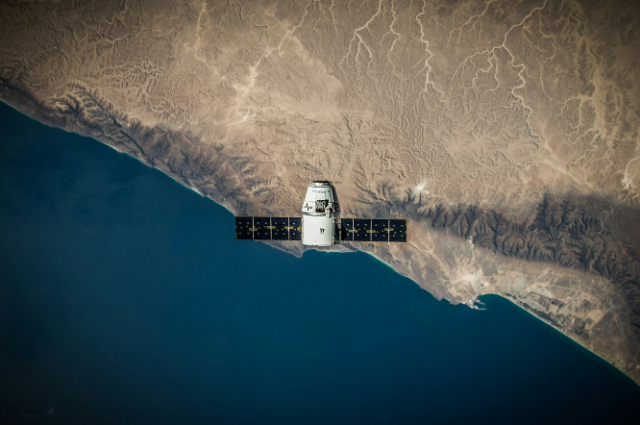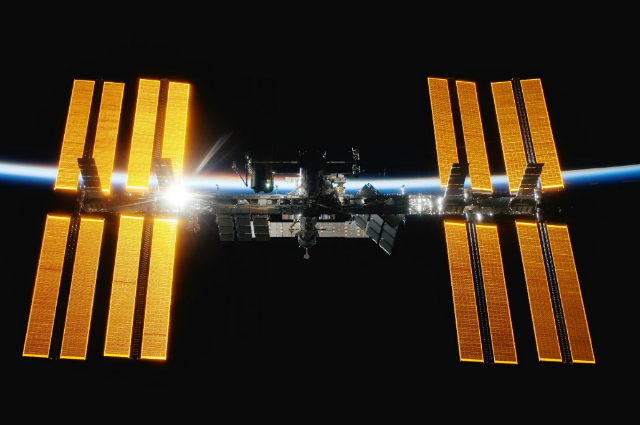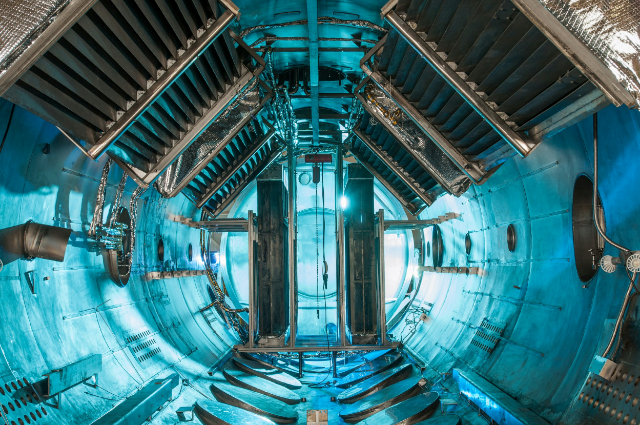
INTRODUCTION:
Historical Context:
Space exploration, an endeavor as old as humanity's curiosity about the cosmos, has traversed from visionary dreams to tangible achievements. It began with theoretical musings and modest experiments, gradually unfolding into an era of groundbreaking discoveries.
The space age, catalyzed by the launch of Sputnik 1 by the Soviet Union in 1957, marked humanity's first significant leap beyond Earth’s atmosphere. This seminal event ignited a race among nations to explore the final frontier, laying the groundwork for the modern era of space exploration.
The first monumental achievement came with the Apollo 11 mission, when Neil Armstrong and Buzz Aldrin became the first humans to set foot on the Moon on July 20, 1969. This historic event not only demonstrated technological prowess but also fulfilled humanity's longstanding aspiration to explore extraterrestrial worlds.
The Moon landing was followed by significant advancements in robotic exploration, epitomized by NASA's Mars rovers. These rovers, such as Spirit, Opportunity, and Curiosity, have provided invaluable insights into the Martian surface, uncovering clues about the planet’s geology and potential for past life.
Another landmark in space exploration was the International Space Station (ISS), a symbol of international cooperation in space. Since its first module was launched in 1998, the ISS has served as a laboratory for scientific research and a testament to collaborative efforts between spacefaring nations.
It represents a harmonious fusion of technology, science, and international diplomacy, underscoring the global commitment to advancing human presence in space.
Current State
Today, space exploration is experiencing a renaissance marked by remarkable achievements and ambitious future plans. NASA continues to lead the charge with its Artemis program, aimed at returning humans to the Moon and establishing a sustainable presence. This program is a precursor to more ambitious goals, including human missions to Mars.
In parallel, SpaceX, a private company founded by Elon Musk, has revolutionized space travel with its reusable Falcon rockets and the Starship spacecraft. SpaceX's successful launch and recovery of reusable rockets have drastically reduced the cost of space travel, making it more accessible and paving the way for commercial ventures in space.
International collaboration has reached new heights with joint missions and partnerships between space agencies worldwide. The European Space Agency (ESA), the Russian space agency Roscosmos, and the China National Space Administration (CNSA) are among the key players contributing to this collaborative spirit.
Projects like the Mars Sample Return mission and various lunar exploration initiatives highlight how nations are working together to push the boundaries of what is possible in space.
THE MOTIVATIONS FOR SPACE EXPLORATION

Scientific Discovery:
Space exploration has always been driven by a profound quest for knowledge, with scientific discovery at its core. One of the most tantalizing aspects of this endeavor is the search for extraterrestrial life. The cosmos, vast and enigmatic, has long ignited human curiosity about whether we are alone in the universe.
Missions like the James Webb Space Telescope and the Mars rovers aim to uncover signs of life beyond Earth, offering glimpses into the potential existence of alien civilizations or microbial life on other planets. Such discoveries could fundamentally alter our understanding of life itself and our place in the universe.
Moreover, space exploration serves as a grand experiment to unravel the mysteries of the cosmos. By studying distant stars, galaxies, and cosmic phenomena, scientists seek to comprehend the origins of the universe, the formation of celestial bodies, and the fundamental forces that govern cosmic interactions.
This knowledge not only enhances our grasp of the universe but also enriches our perspective on Earth’s own origins and future.
Technological Advancement:
The pursuit of space travel has spurred remarkable technological advancements with profound impacts beyond the cosmos. Innovations originally developed for space missions often find transformative applications on Earth.
For instance, advancements in materials science, developed to withstand the harsh conditions of space, have led to more durable and efficient products in various industries. Space technology has also catalyzed progress in fields such as telecommunications, computing, and medical devices.
The development of lightweight, high-strength materials and miniaturized electronics showcases how space exploration drives technological progress that permeates everyday life.
Furthermore, the quest to overcome the challenges of space travel has driven innovations in propulsion systems, life support technologies, and robotics.
These advancements pave the way for future space missions and simultaneously inspire breakthroughs in other fields, illustrating the symbiotic relationship between space exploration and technological development.
Economic Potential:
The economic potential of space exploration is vast and increasingly recognized. Asteroid mining, for instance, promises to unlock a wealth of resources previously beyond our reach.
These celestial bodies are rich in metals such as platinum and nickel, which could revolutionize industries and contribute to economic growth. The feasibility of extracting and utilizing these resources could reshape the global economy and reduce reliance on terrestrial mining.
Additionally, space tourism and satellite industries offer burgeoning commercial opportunities. The vision of space travel for leisure, once confined to science fiction, is now becoming a reality with companies like SpaceX and Blue Origin making strides in this field.
As space tourism evolves from a niche market to a more accessible venture, it could generate substantial revenue and open new avenues for exploration. Similarly, the satellite industry, vital for communications, navigation, and Earth observation, continues to expand, driving economic benefits and fostering innovation.
Each of these aspects fuels the drive to explore the cosmos, promising discoveries that could redefine our understanding of the universe and our place within it, while simultaneously offering tangible benefits here on Earth.
THE CHALLENGES OF SPACE COLONIZATION
As humanity ventures further into the cosmos with ambitions of colonizing distant worlds, several profound challenges must be addressed. These hurdles span technological, human, and ethical dimensions, each critical to ensuring successful and sustainable space colonization.

Technological Hurdles
1. Development of Sustainable Habitats
Creating self-sustaining habitats in space is paramount for long-term colonization. Unlike terrestrial environments, space lacks the natural resources necessary to support life, necessitating the development of closed-loop systems.
These habitats must recycle air, water, and waste with high efficiency to maintain a livable environment. Advances in materials science are crucial for developing structures that can withstand the harsh conditions of space, including radiation and extreme temperatures. Innovative approaches, such as bio-regenerative life support systems and inflatable habitat modules, are being explored to address these needs.
2. Advances in Propulsion Systems
Long-duration missions require propulsion technologies that can achieve faster travel times and ensure crew safety. Current chemical rockets, while effective for short journeys, are inadequate for the vast distances involved in interplanetary travel.
Research is focused on advanced propulsion systems, such as ion thrusters and nuclear thermal rockets, which promise greater efficiency and speed. These technologies aim to reduce travel time, mitigate space radiation exposure, and improve overall mission feasibility.
Human Factors
1. Psychological and Physiological Impacts
The isolation and confinement of space travel pose significant psychological challenges. Extended periods away from Earth can lead to mental health issues such as depression and anxiety. Additionally, the microgravity environment affects physiological functions, including muscle atrophy and bone density loss.
Solutions to these problems include developing countermeasures such as exercise regimens and psychological support systems. Creating supportive social environments and providing access to mental health resources are also essential for maintaining crew well-being.
2. Solutions for Life Support
Maintaining life support in space involves ensuring a reliable supply of air, water, and food. Advanced recycling technologies are crucial for reprocessing carbon dioxide into oxygen and purifying wastewater.
Food production in space, through methods like hydroponics and aeroponics, is also being developed to ensure a continuous supply of nutrients. These systems must be robust and efficient to support long-term missions and reduce dependency on resupply missions from Earth.
Ethical and Legal Considerations
Ownership and Governance of Extraterrestrial Territories
As space exploration progresses, questions of ownership and governance of extraterrestrial territories become increasingly relevant. The Outer Space Treaty of 1967, which states that space and celestial bodies are the "province of all humankind," establishes a framework for international cooperation but leaves many issues unresolved.
As private companies and nations prepare for potential colonization, establishing clear guidelines for resource ownership, territorial claims, and governance will be crucial to avoid conflicts and ensure equitable access to space resources.
Ethical Implications of Altering Celestial Bodies
The ethical implications of modifying celestial bodies, such as terraforming planets or mining asteroids, are profound. Altering the environments of other worlds raises questions about the preservation of potential extraterrestrial life forms and the long-term consequences of such actions.
There is a need for ethical frameworks to guide these activities, ensuring that they are conducted responsibly and with consideration for the potential impacts on both the environment and any existing life forms.
CURRENT AND FUTURE MISSIONS

Photo by Alex Knight on Unsplash
Mars Colonization
Overview of Current Mars Missions and Their Goals
The Red Planet has captured human imagination for decades, and recent missions have brought us closer to understanding its potential for future colonization. NASA's Perseverance rover, which landed on Mars in February 2021, is a centerpiece of this exploration. Its mission is not only to search for signs of ancient microbial life but also to collect samples for future return to Earth.
The rover's advanced suite of instruments is providing unprecedented insights into Mars' geology and climate, which are crucial for determining the planet's habitability.
Similarly, the European Space Agency's (ESA) ExoMars rover, scheduled for launch in the coming years, aims to search for biosignatures and investigate the Martian atmosphere.
These missions are laying the groundwork for more ambitious plans, paving the way for potential human exploration and settlement.
Plans for Human Missions to Mars by NASA, SpaceX, and Other Entities
Looking ahead, NASA has outlined an ambitious roadmap for human missions to Mars, with the Artemis program serving as a crucial precursor. The Artemis missions aim to establish a sustainable human presence on the Moon, which will provide valuable experience and technology necessary for Mars exploration.
NASA's ultimate goal is to send astronauts to Mars in the 2030s, relying on innovations in life support systems, propulsion technology, and habitat design.
SpaceX, led by Elon Musk, has even bolder plans. The company’s Starship spacecraft is central to its vision of interplanetary travel. With its fully reusable design, Starship aims to reduce the cost of space travel and make Mars colonization feasible.
SpaceX envisions sending the first crewed missions to Mars within the next decade, with the long-term goal of establishing a self-sustaining colony.
Other players in the field, such as Blue Origin and international space agencies, are also exploring Mars missions, though their timelines and objectives vary. Collaborative efforts are likely to accelerate progress and share the financial and technical burdens of such a monumental undertaking.
Moon Bases
Artemis Program and Plans for Lunar Habitation
The Moon is not just a distant celestial body but a stepping stone in humanity's quest for deeper space exploration. NASA’s Artemis program represents a new era of lunar exploration, aiming to return humans to the Moon by the mid-2020s.
The program's goals extend beyond mere visitation; it focuses on establishing a sustainable presence through the development of the Lunar Gateway and the Artemis Base Camp.
The Lunar Gateway will serve as a space station in lunar orbit, providing a staging point for missions to the lunar surface and beyond. The Artemis Base Camp, planned for the lunar south pole, is expected to be a hub for long-duration exploration, resource extraction, and scientific research.
These initiatives are crucial for testing technologies and strategies that will be applied to Mars missions.
The Moon as a Stepping Stone for Deeper Space Exploration
The Moon's proximity and relatively low gravity make it an ideal location for developing the technologies and infrastructures required for deep space travel. By establishing a permanent presence on the Moon, scientists and engineers can experiment with resource utilization, life support systems, and spacecraft operations in a setting that simulates some of the challenges of Mars and beyond.
Lunar exploration also offers the potential to mine resources, such as water ice, which can be converted into oxygen and hydrogen for rocket fuel. This capability could facilitate more ambitious missions to other planets and asteroids, further expanding humanity's reach into the solar system.
Exploration of Other Celestial Bodies
Missions Targeting Asteroids, Moons of Jupiter and Saturn
Beyond Mars and the Moon, space agencies are targeting other celestial bodies to broaden our understanding of the solar system. Missions like NASA's OSIRIS-REx, which successfully collected samples from the asteroid Bennu, are providing insights into the building blocks of the solar system and the potential for mining resources in the future.
Similarly, NASA's upcoming Europa Clipper mission aims to explore Jupiter's moon Europa, which is believed to harbor a subsurface ocean beneath its icy crust.
The mission will assess the moon's habitability and search for signs of life. Meanwhile, the Dragonfly mission to Saturn’s moon Titan promises to explore its prebiotic chemistry and potential for supporting life.
Potential for Colonizing These Bodies
The potential for colonizing asteroids and moons remains speculative but intriguing. Asteroids could serve as resource hubs, offering metals and minerals essential for space infrastructure. Moons like Europa and Titan present unique challenges and opportunities, with their extreme environments and potential for subsurface oceans offering both scientific curiosity and the possibility of future human exploration.
These missions not only advance our scientific knowledge but also lay the groundwork for a future where humanity may extend its presence beyond Earth, making the exploration and potential colonization of these distant worlds a tantalizing prospect.
THE ROLE OF INTERNATIONAL COLLABORATION

International Space Station (ISS): A Model of Multinational Cooperation
The International Space Station (ISS) stands as a testament to the power and potential of international collaboration in space exploration. Conceived as a joint venture among space agencies from the United States, Russia, Europe, Japan, and Canada, the ISS symbolizes the fusion of expertise and resources from around the globe.
This orbiting laboratory, continuously inhabited since 2000, serves as a pivotal platform for scientific research, technology testing, and international diplomacy.
Contributions and Benefits of Multinational Cooperation
The ISS's success is a direct result of its diverse international contributions. Each partner brings unique expertise and technology to the table, creating a rich tapestry of knowledge that drives the station’s operations.
For example, NASA’s advanced spacecraft and engineering capabilities, Roscosmos’s experience with long-duration space missions, ESA’s contributions in science and technology, JAXA’s innovation in robotics, and CSA’s advancements in spacewalk techniques collectively enhance the ISS’s functionality.
This collaboration yields multiple benefits. Scientifically, the ISS provides a microgravity environment crucial for experiments in fields such as biology, materials science, and astronomy. These experiments often lead to breakthroughs that have practical applications on Earth, such as advancements in medical technology and materials engineering.
Furthermore, the shared nature of the ISS fosters a spirit of unity and peace, demonstrating that space exploration can bridge national divides and focus on common goals.
Lessons Learned from ISS Operations
Operating the ISS has imparted valuable lessons in managing a multinational endeavor. One key lesson is the importance of robust communication and coordination among international partners. The complexity of the ISS, with its various modules and experiments, necessitates meticulous planning and real-time communication to ensure smooth operations.
Additionally, the experience has highlighted the need for flexible problem-solving approaches, as unforeseen issues often require innovative solutions that draw on the diverse expertise of all participating nations.
Another lesson is the significance of mutual respect and understanding in maintaining effective partnerships. Navigating different regulatory environments, cultural perspectives, and organizational priorities has underscored the value of building strong interpersonal relationships and fostering a collaborative spirit among diverse teams.
Global Space Agencies: Collaborative Powerhouses
- Role of Agencies like ESA, Roscosmos, and CNSA
The European Space Agency (ESA), the Russian space agency Roscosmos, and the China National Space Administration (CNSA) are integral players in the global space exploration landscape. Each agency brings distinct strengths and objectives to the table.
ESA’s contributions span a wide range of scientific, technological, and exploratory missions. Its focus on collaborative projects, such as the Mars Express and ExoMars missions, illustrates its commitment to advancing space science through international partnerships. Roscosmos, with its rich history of space exploration and expertise in long-duration missions, continues to provide crucial support for ISS operations and other space missions. CNSA, a rising powerhouse in space exploration, has made significant strides with missions like the Chang’e lunar explorations and the Tianwen Mars mission, showcasing China’s growing capabilities and ambitions in space.
- Importance of Joint Missions and Shared Resources
Joint missions and shared resources are fundamental to the advancement of space exploration. Collaborative efforts like the ISS demonstrate that pooling resources and expertise can lead to more ambitious and complex projects than any single agency could undertake alone. This collective approach not only reduces costs but also maximizes the potential for scientific discovery and technological innovation.
Furthermore, shared missions foster a sense of global cooperation and unity. By working together on space projects, nations build trust and mutual understanding, which can translate into improved international relations and collaborative efforts in other areas.
The exchange of knowledge and technology also accelerates progress, benefiting all parties involved and contributing to the collective advancement of humanity’s presence in space.
TECHNOLOGICAL INNOVATIONS DRIVING SPACE EXPLORATION

Propulsion Technologies: Navigating New Frontiers
The most transformative development is the advent of reusable rockets. Traditionally, rockets were single-use, with each launch representing a significant expense. However, companies like SpaceX have revolutionized this paradigm with the Falcon 9 and Falcon Heavy rockets.
These rockets feature first stages that return to Earth and are refurbished for multiple flights, dramatically reducing the cost per launch and increasing the frequency of space missions. This innovation not only makes space more accessible but also sets the stage for more ambitious missions, including manned missions to Mars.
In addition to reusable rockets, ion propulsion represents a leap forward in space travel technology. Unlike traditional chemical rockets, which rely on explosive reactions for thrust, ion propulsion uses electric fields to accelerate ions and generate propulsion.
This technology offers a much higher efficiency, allowing spacecraft to travel longer distances with less fuel. NASA’s Dawn spacecraft, which explored the asteroid Vesta and the dwarf planet Ceres, utilized ion propulsion to achieve its mission objectives. Such advancements pave the way for deeper space exploration and more prolonged missions.
Life Support Systems: Sustaining Life Beyond Earth
As we venture further into space, the challenge of sustaining life becomes increasingly critical. Advances in recycling technologies have made significant strides in creating closed-loop life support systems. Modern systems are capable of recycling air and water, essential for long-term space missions.
The International Space Station (ISS) employs sophisticated systems to purify water from wastewater and atmospheric humidity, ensuring a continuous supply of clean water. Similarly, air revitalization systems remove carbon dioxide and replenish oxygen, creating a habitable environment for astronauts.
Innovations in sustainable food production are also transforming life support strategies. Traditional food storage and supply are impractical for extended missions, so research is focusing on space farming and hydroponics.
Robotics and AI: The Silent Pioneers
Robotics and artificial intelligence (AI) are increasingly becoming indispensable to space exploration. Robots are tasked with performing intricate and often dangerous tasks that are beyond human capability. The Mars rovers, such as Curiosity and Perseverance, exemplify the role of robotics in exploring alien landscapes. These rovers are equipped with advanced sensors and instruments, enabling them to conduct scientific experiments and analyze samples from the Martian surface, all while navigating the harsh conditions of the Red Planet.
AI further enhances the capabilities of these robotic systems. Machine learning algorithms enable rovers to make autonomous decisions, such as navigating around obstacles or selecting promising sites for study.
AI is also used to analyze the vast amounts of data collected by space missions, identifying patterns and insights that might otherwise go unnoticed. The combination of robotics and AI accelerates the pace of exploration and expands the scope of what can be achieved in space.
CONCLUSION
As we gaze into the cosmos, the idea of becoming a multi-planetary species is not merely a science fiction fantasy but a burgeoning reality. The long-term vision for humanity’s presence in space encompasses more than just setting foot on Mars or establishing lunar bases; it represents a transformative leap in our collective existence. It is a future where human life is no longer confined to a single planet, but rather spread across multiple celestial bodies, each contributing to the survival and evolution of our species.
This grand vision extends beyond exploration; it embodies the aspiration to secure the future of humanity against existential threats, from cosmic impacts to terrestrial catastrophes. By establishing self-sustaining colonies on other planets, we not only mitigate risks but also open new frontiers for scientific research and technological advancement. These outposts in space could serve as hubs of innovation, driving progress in areas like materials science, medicine, and energy production.
Moreover, space exploration provides a unique perspective on our home planet, fostering a deeper appreciation for Earth’s fragility and interconnectedness. As we work to make life on other worlds a reality, we simultaneously enhance our understanding of how to better protect and preserve our own planet.
The quest for extraterrestrial life and the study of other planetary environments offer insights that could revolutionize our approach to solving some of Earth's most pressing challenges, from climate change to resource management.
